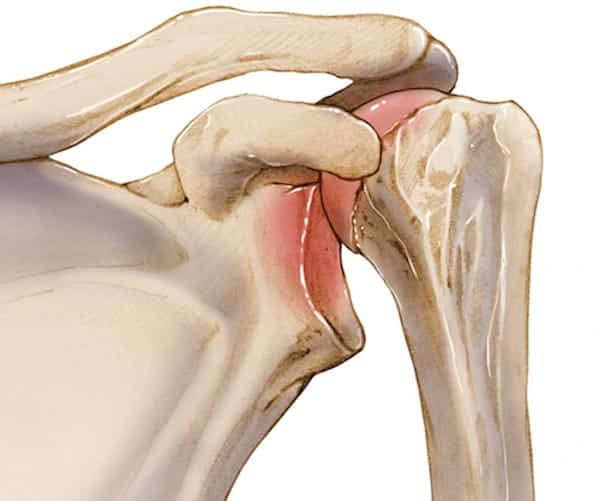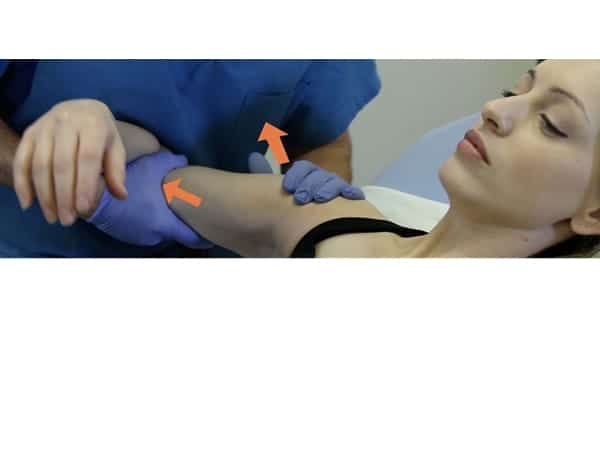Superior Glenohumeral Dislocation
Superior Glenohumeral Dislocation

This rare injury is less common than inferior glenohumeral dislocation but is associated with fractures of the acromion, clavicle, coracoid, and humeral tuberosities, as well as injury to the acromioclavicular joint. A clinical examination typically reveals a palpable humeral head above the level of the acromion. Neurovascular injuries are common and must be ruled out.
Mechanism of Injury
Extreme anterior and superior directed force applied to the adducted upper extremity, such as a fall from a height onto the upper extremity, forces the humeral head superiorly from the glenoid fossa. Typically, it is accompanied by soft tissue injury to the rotator cuff, glenohumeral capsule, biceps tendon, and surrounding musculature.
Clinical Evaluation
The patient typically presents with a foreshortened upper extremity held in adduction. Clinical examination typically reveals a palpable humeral head above the level of the acromion. Neurovascular injuries are common and must be ruled out.
Radiographic Evaluation
Trauma series of the affected shoulder: AP, scapular-Y, and axillary views are obtained. The AP radiograph is typically diagnostic, with dislocation of the humeral head superior to the acromion process. The radiograph must be carefully scrutinized for associated fractures, which are common and may be clinically not detected because of a diffusely painful shoulder.

Treatment
Closed reduction should be attempted with the use of analgesics and sedatives. Axial traction with countertraction may be applied in an inferior direction, with lateral traction applied to the upper arm to facilitate reduction. As with inferior dislocations, soft tissue injury and associated fractures are common; irreducible dislocations may require open reduction.
Complications
Neurovascular complications are usually present and typically represent traction injuries that resolve with reduction.

